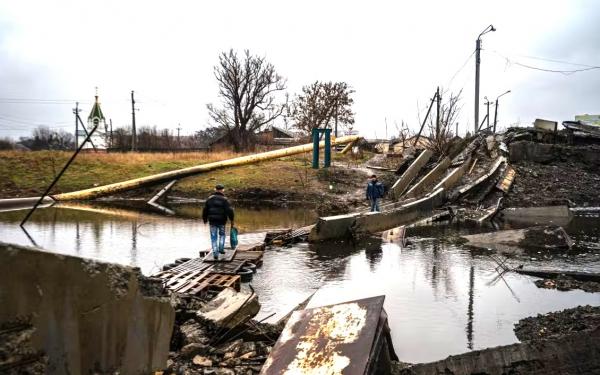Rivers and water systems as weapons and casualties of the Ukraine war
19 Oct 2023 by The Water Diplomat

In an article published in late September in Earth’s Future , researchers Peter Gleick, Viktor Vyshnevskyi and Serhii Shevchuk provide an overview of the consequences of the Russia – Ukraine war for the main rivers and water infrastructure in Ukraine. The article contributes to the Water Conflict Chronology , an open-source online database that tracks water conflicts around the world from ancient to modern times. Data from the Chronology indicates an increase in water-related conflicts in the last two decades as a result of violence in the Middle East, disputes over access to water during droughts (e.g., India, Iran), and confrontations between pastoralists and farmers in sub-Saharan Africa.
The newly published article draws on information about the Russia – Ukraine war and its geophysical, hydrological, and environmental consequences compiled by researchers who in turn have relied on new direct measurements, visual observation and media reports, as well as remote-sensing images. It focuses on the Dnipro River, one of the largest rivers in Europe and shared by Russia, Belarus, and Ukraine, on which six dams have been built since the 1920’s for hydropower, irrigation development, water supply, shipping, and fishing. Levees and dikes have also been constructed as a flood-protection measure.
Water has been used as a defensive and offensive weapon since the outbreak of the current war: Ukrainian forces destroyed a dam on the Irpin River to create an obstacle for advancing Russian troops, a highway over the Pechenigske dam was damaged to hinder traffic and water was released from the Oskilske reservoir to create a physical barrier for Russian troops. Russian forces have attacked many water supply and treatment plants, attacked a dam on the Inhulets River, destroyed the Karlivka dam, and attacked a hydroelectric dam at the town of Kremenchuk. However, a major focus of the conflict and an incident with far-reaching implications for Ukraine was the destruction of the Kakhovka dam and the emptying of the large reservoir. On the 6th of June it contained almost 20 km3 of water. The water released from this event flooded four cities and many villages and transported a heavy pollution load downstream into the northeastern part of the Black Sea. The reservoir of the Kakhovka dam enabled hydropower generation, water supply to major cities, and water for agricultural irrigation in southern Ukraine.
The consequences of the use of water as a defensive and offensive weapon in Ukraine, the authors note, include extensive pollution of the lower reach of the Dnipro River, its estuary, and a part of the Black Sea. In economic terms, large urban centres have been deprived of reliable water sources, and Ukrainian agriculture has been undermined with the interruption of the supply of irrigation water. The authors note with particular concern the public-health impacts of no longer having reliable and safely managed clean water and sanitation systems, as well as the global implications for food availability and prices from the loss of Ukrainian food production.
The authors also note the importance of applying humanitarian law to ensure the prevention of similar attacks on water resources and infrastructure in the future and assert that the Geneva Convention and other international agreements protecting civilian populations from war and conflicts need to be more assertively enforced by international bodies.
